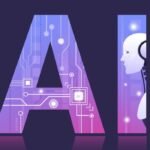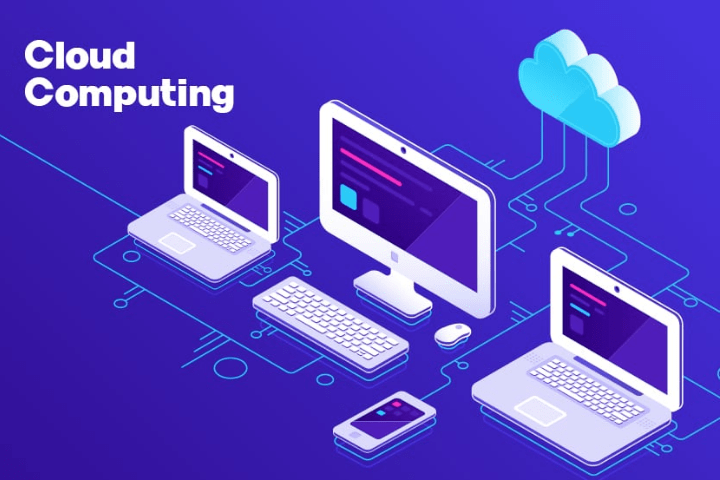The term ‘Cloud Computing’ has acquired prominence, but what exactly is it, how would it affect whatever users do & is it truly innovative? What is the meaning of a cloud? What happens in the cloud? These are likely questions any individual will ask oneself. The phrase “Cloud” is often using everywhere. Even in its basic form, Cloud Computing is the storing & accessing of programs and data via the internet instead of your storage disk.
It reminds me of the times when PowerPoint & flowcharts presentations depicted the internet’s huge server architecture as just a fluffy cloud absorbing connections and dispersing information as it floated. Your hard disc is not an issue with Cloud Computing. Cloud Computing & local storage occur when storing the data on the applications or a hard drive will run from the hard drive. Obtaining personal data is quick & straightforward since all users have physical connection by, either for that single machine or someone else on the internal network. Functioning with a personal hard drive was the norm in the computer business for years. Nonetheless, some might say if Cloud Computing remains better for factors I’ll explain momentarily.
Aspects
Users do not need a specific NAS (network-attached storage) device in their homes to access the cloud. The use of Cloud Computing does not entail the retention of information on a professional or personal network. (However, many NAS machines will enable users to access stuff wirelessly thru the internet & Western Digital has at least one model dubbed “My Cloud,” again to complicate matters.) To consider “Cloud Computing,” users can view the programs or data over the internet and have that files synchronized with other data via the internet.
Users may understand being on the receiving side of a significant business’s link. As a user, you will never know what sort of massive data processing in a cloud server consumes more power per day than the entire community does in a year. The result will be the same, Cloud Computing can indeed perform almost everywhere, at any time, as long as you have an internet connection.
End-User Over Business
Let’s get one thing straight. I’m speaking about Cloud Computing in terms of how it impacts individual consumers, like those of us who work at home or even in small-to-medium-sized businesses that utilize the internet regularly. There is a definite “cloud” until it comes to business.
Some businesses choose SaaS (Software-as-a-Service), which involves the firm subscribing to a program that will distribute online (Think about Salesforce.com). PaaS (Platform-as-a-Service) allows a company to create customizing apps that may utilize by many corporations. Do not overlook Infrastructure-as-a-Service (IaaS), in which giants such as Microsoft, Amazon, Rackspace & Google provide a foundation that can offer services to other firms. (For example, Netflix uses Amazon’s cloud services.) Of course, Cloud Computing is an enormous business. Statista, our colleagues at Statista, created this picture in February 2020. Highlighting Amazon’s domination there in the $100 billion-a-year industry.
This is also a season before even the COVID-19 coronavirus demolishes many businesses which rapidly moved Cloud Computing to their homes. However, because its residents of the United States, thus represent only a tiny slice of the cloud pie. When worldwide use, the company’s value skyrockets. The valuation at 272 billion dollars in 2018 and is expect to value at 623.3 billion dollars by 2023, as per Markets & Markets.
Common Cloud Computing Illustrations
Once that comes to Cloud Computing, the line between Cloud Computing & local computing can be a little blurry. It is because the cloud has become a component of almost everything on our devices. You may easily have a localizing application (like Microsoft Office) that retains data into the cloud (Microsoft OneDrive). Microsoft also launched an integrated suite of products called Office (sometimes known as Office for the Internet), which includes browser versions of Excel, Word, OneNote & PowerPoint that will read on any web page without installing anything.
As a result, they fall within the category of Cloud Computing (web-based cloud). Other notable Cloud Computing examples that you are almost certainly aware of:
- Google Spreadsheets
- The iCloud Service from Apple
- Google Documents
- Belts & Suspenders
The following file-synchronization/backup provider as well as others such as IDrive, Box & SugarSync all operate in the cloud since they maintain an edition of users information virtually & simultaneously synchronize those files. Synchronization is a crucial component of Cloud Computing features even if users see the document remotely. More details will obtain in our guide to the top file-syncing & Cloud Computing services.
Hardware For Cloud Computing
A Chromebook is the ultimate of an entirely cloud-basing computer. Such laptops want enough processing power & local storage to run Chrome OS, essentially turning Google Chrome in with an operating system. Every user use on a Chromebook takes place digitally in media, storage & programs are all saved in the cloud. As a result, they are often inexpensive, making them extremely popular for educational reasons. The most recent model, introduced in 2017, could even run Android apps.
Users might use a ChromeBit, the candy-bar-sized device that converts any HDMI-enabled monitor into a useable device running Chrome OS. One is still available from Asus. What if you don’t have access to the internet but still need to view your data? Regardless of the fact, Chrome OS’s offline capability has improved, this remains one of the most common criticisms leveled against it. It is not the first occasion a company has attempted this strategy. For decades, dumb terminals without any internal memory & a link to a server-side or mainframe will offer.
The Netpliance iOpener, The New Internet Computer (NIC) & the disastrous 3Com Ergo Audrey are the initial internet-only technology projects globally. Anyone might argue that they were all advanced; dial-up connections in the 1990s are just like training wheels compared with today’s turbocharged broadband internet connections. On the contrary, many would claim that Cloud Computing somehow does not exist if internet connections are just as fast as disc connections.










